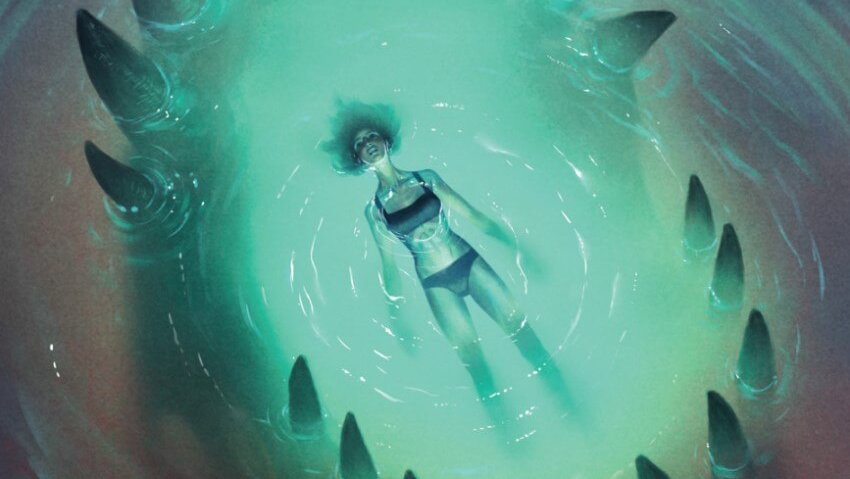Maw does not want you to feel good. It pokes. It prods. It disintegrates the corporate-inspired Goop kind of feminism.
CW: This review and interview mention sexual assault, PTSD, and gendered violence.
Maw (Boom!) is the brainchild of the award-winning journalist Jude Doyle. With art from A.L. Kaplan, Maw looks at trauma for what it is: pain. With colors by Fabiana Mascolo and letters by Cardinal Rae, Maw provides an unapologetic look at rape and healing. WWAC spoke to Doyle about the process of creating Maw and why they chose the medium of comics to tell the story of Marion.
Is this enough?
In Maw #1, sisters Marion and Wendy arrive at the island of Angitia, a safe-haven and Feminist utopia. It’s where women go for empowerment and to share their stories of trauma. They are led by a tall blonde mother figure named Diana Spiro. There, Wendy and Marion witness women give birth to their rage (literally). It’s too much for Marion. She decides to escape to a nearby bar where she is raped for the second time in her life.
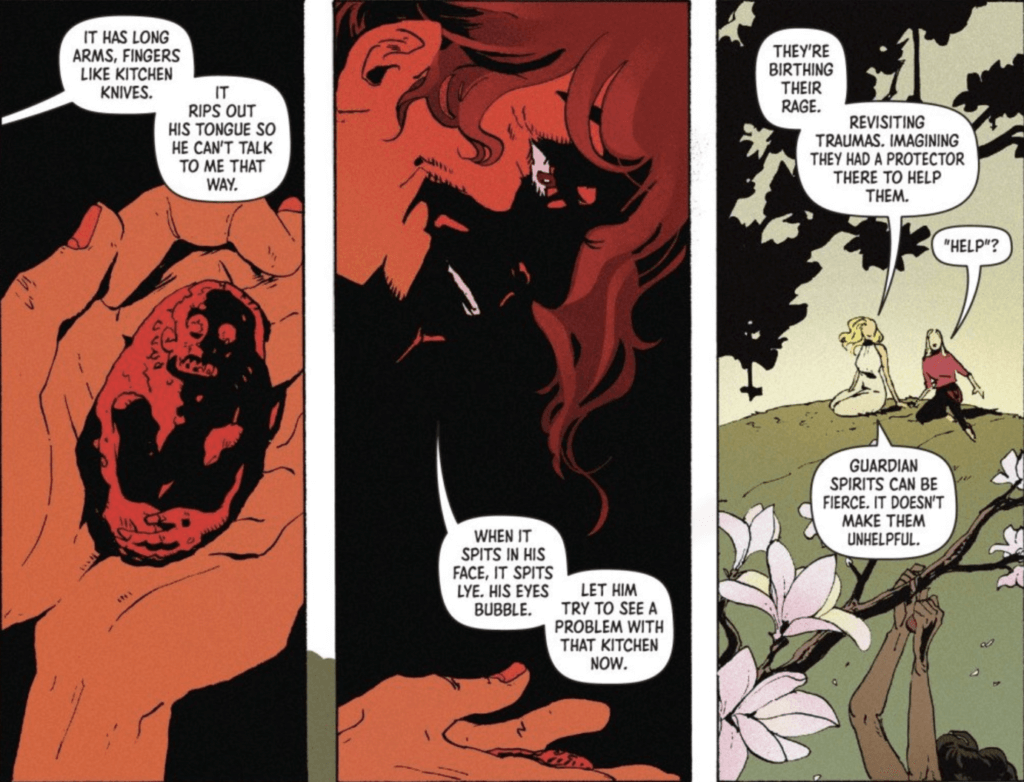
Maw’s uncompromising depiction of violence and what passes as justice is something Doyle has discussed in their past works and on their blog. The idea that a justice system steeped in creating that violence could ever give or provide relief for those harmed, is at odds with reality. That reality, the rawness of rage, it’s all here.
Through a series of flashbacks in Maw #1, we see how Marion attempts to use the legal system to bring the perpetrators of her first assault to justice. There was ample physical evidence, not that it would have mattered one way or the other. Weber’s psychological and emotional history is used against her. It’s the double-bind of gender-based power systems. You operate by the system’s rules until you attempt to assert your rights. Those same rules are then deployed against you. There is no room for an ugly victim.
Doyle wants to make space for the ugly, the broken. “That violation is very much being summed up [in Maw]. It’s also just that feeling of when you have been through an assault, you can carry that experience with you almost like a foreign object that gets lodged in you somehow. Your whole psyche reconstructs itself around the experience. It’s heavy and it’s painful. The way that our bodies sort of expel things, they separate out like this is me and this is not me, it’s gory and it’s gooey. It’s icky, it’s dangerous, and it hurts. I feel like that’s what having an emotion is like.”
Bite me
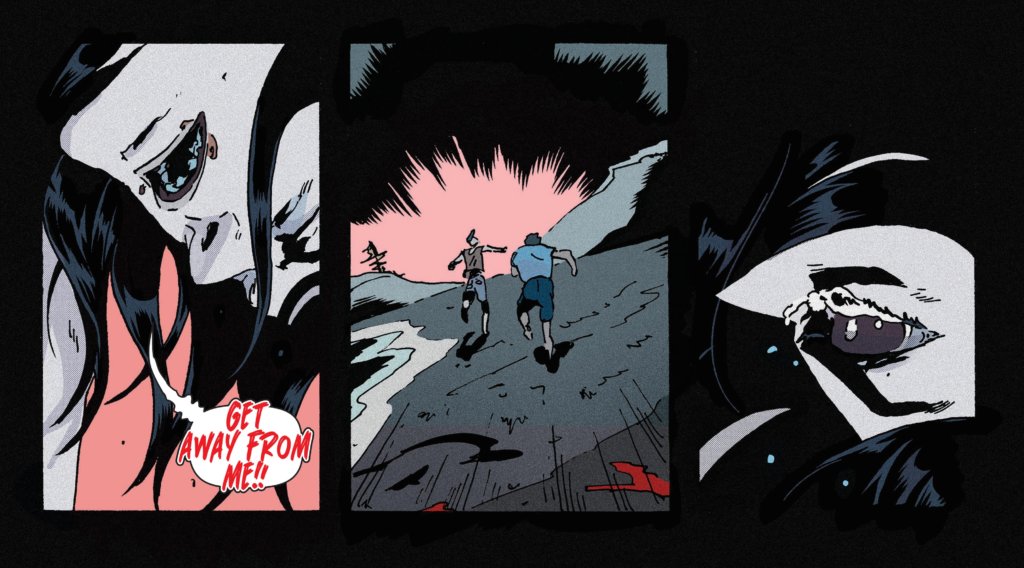
I used to believe the more details I provided of my assault(s), the more believable I’d be. If I could just paint a picture, show people that I tried…
You grow up steeped in a culture obsessed with victimhood. No, that’s not it. You grow up in a culture that wants to believe it cares about victims of sexual violence. Heinous is a word often used to describe rape. The worst kind of violation. A crime of power. I grew up in the 1990s steeping in a tea of a Lifetime movie of the week, special episodes about date-rape, and on, and on. Sure, you were raped, but don’t let that ruin your life! Well, mine did. That’s part of what makes Maw so fucking exhilarating to read.
Maw allows me the freedom to stare at my pain, at myself. It brings it out and invites us to look at it.
I need to be awful. I have made choices knowing the harm they might cause me in the hopes of feeling enough physical pain to warrant sympathy from others. Maybe if other people felt something for me, I could feel something for myself? I never did. I just felt numb. I still do.
Trauma Stoned
At the women’s only retreat, Diana Spiro gently demands women share their trauma in the group. What has been taken from Wendy? She does not answer. What happens if you don’t have the kind of trauma society wants to see from women? What happens if you don’t identify as a woman at all? Does their trauma matter? It brings me to consider how the creative team depicts Spiro and the island’s founder, Roberta Vlodeck.
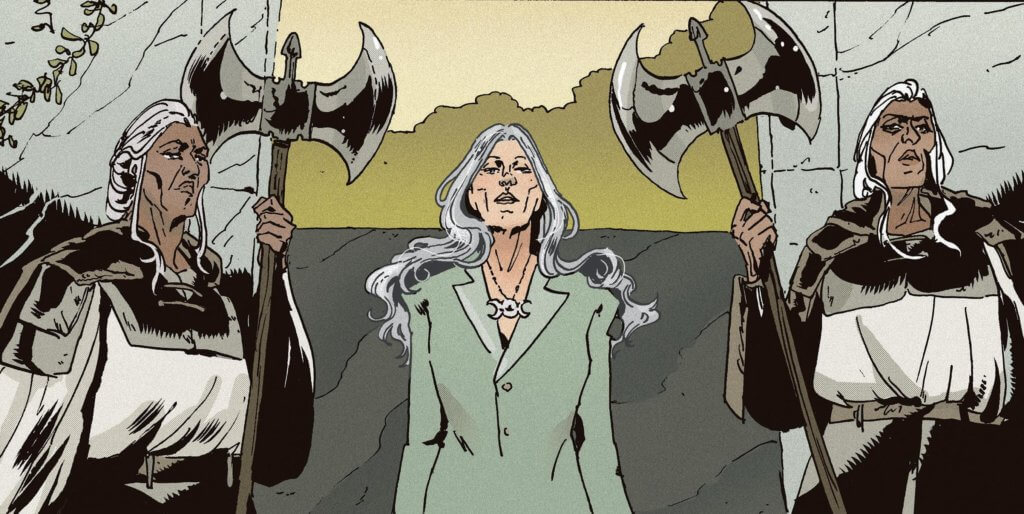
These women are camera-ready, perfectly coifed, thin. In the panel above, Kaplan depicts Spiro guarded by two women of color. White women get to be the figureheads of feminism and trauma. They exploit the oppression of marginalized people to maintain their power. These women are known to us well. They give TED talks, they fundraise, but they never stand aside to elevate the experiences of those society seeks to oppress further and marginalize.
It’s easy to see Spiro and Vlodeck as ciphers to Margaret Sanger, the founder of Planned Parenthood and eugenist. It’s not just Sanger, though. The corporate trauma complex seeks to profit from the exploitation of trauma without dismantling the systems that help foster it. There is a wellness to the right-wing conspiracy theorist pipeline. That fact tells us a lot about how skeptical we should be of any organization, person, or celebrity who only wants to talk about made-for-TV-trauma.
Yet, Doyle is not without sympathy for second-wave feminists. Doyle says, there’s a combination of “immense beauty and also the potential for it all to go just terribly wrong is really baked into the character of Diana.”
This system wants people to give birth to their trauma and rage and care for it, manage it in a way that the rest of society finds tolerable. We are told to nurture it, trot it out like an infant when it’s all dressed up and suitable for public viewing. Provide details, but not too many. Look like a sympathetic victim, but do not pander. Have a personality, but not enough to make anyone notice you. Be visible and invisible. Be beautiful and in pain. Our culture delights in the ecstasy of trauma. It’s part of why Maw never depicts rape itself.
Doyle says the concept for the comic came about because they grew weary of writing persuasive articles. People know what rape is. They know what sexual assault looks like. We don’t need another perspective of the assailant in comics, we need to look at the human these acts of violence are happening, we need to get inside of them in a way that is not artifical. In Maw, Doyle and Kaplan want you to see the humanity of trauma.
Speaking to this, Doyle says, “You’ll see Marion is a very visual character, she is a really depleted human being when we first meet her. She is deeply traumatized. She’s been traumatized not only by rape but by the court system, by the indifference of her culture. That’s her meeting point with Diana, where they both tried to tell the truth and nobody cared. What do you do when nobody else is listening? Nobody will hold this [pain] with you.”
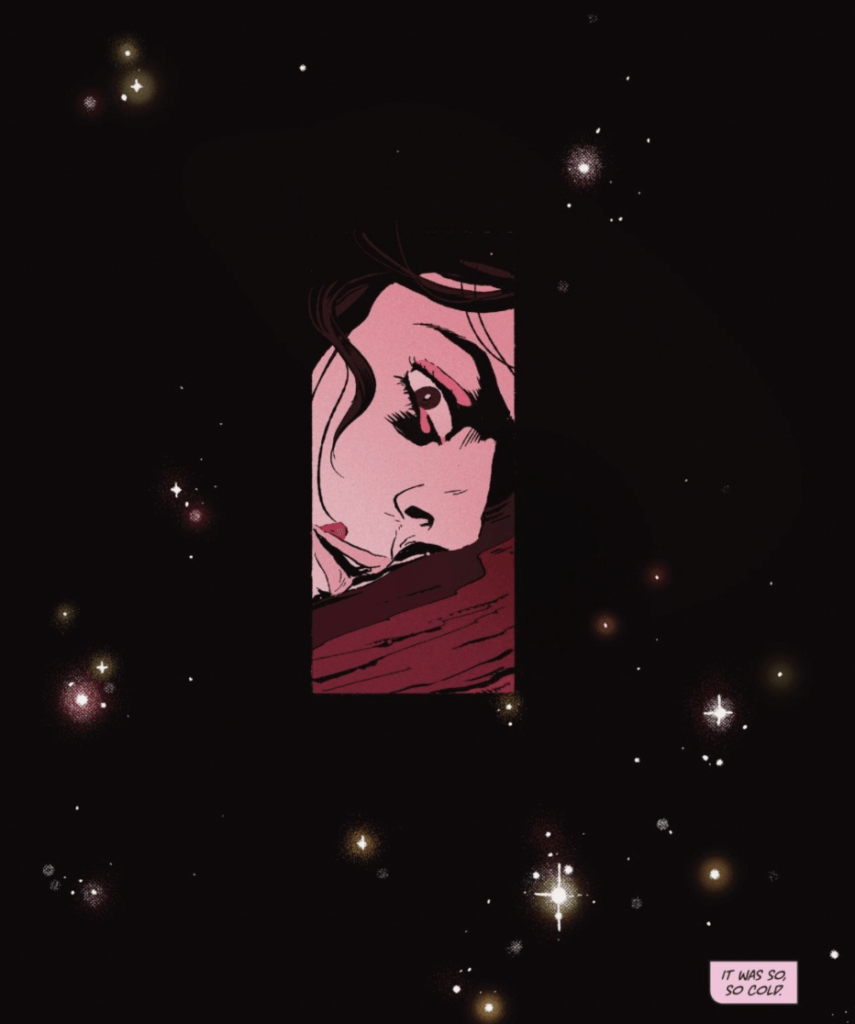
In the panel above, Doyle and Kaplan demonstrate how horror can be healing and therapeutic. Doyle says a lot of 1970s folk horror-inspired them. The ability of comics to invoke body horror in Maw is incredibly important to Doyle.
“Marion’s body and the way it is constantly betraying her and coming apart around her, that’s a really visual process that might do more to tell you about the ugliness of survival and the pain of survival. Being traumatized doesn’t necessarily make you a superhero. It doesn’t necessarily make you a saint. It doesn’t put you in a position to save the world. Sometimes it just hurts.”
Doyle added, “With Marion, what I’m asking you to do is just look at her and acknowledge she just hurts and that’s okay on its own. Just having the pain is enough to have us believe you and care about what happens to you.”
I couldn’t help but get emotional during my interview. I am not objective when it comes to this topic, and I can’t pretend to be. To try and convey what it is like to see a character unapologetically broken, just trying to muster enough energy to breathe…
Trauma can produce any emotion, and all of them. It is ugly. There are no words strong enough to describe the visceral entity that trauma is. My rapes are a mass, an ever-splintering mitosis that fractures me, time and time again. I understand Marion. It’s not that she wants to die. She just doesn’t know how to live with this THING inside of her. This thing that pulls all matter towards it. Alas, what happens when it is expelled? Maw intends to find out.
For Doyle, it all goes much deeper. How could it not? On this experience and what they hope it brings to people, Doyle said, “I would say that the most important thing I found writing this was that if you can look at that deeply hurt version of yourself for long enough, no matter how scary it looks at first, you’re going to find something beautiful there. You’re going to find a place of compassion for it. Don’t carry it alone. Don’t be afraid to look right at it, because when you look at all the pain that you’re afraid to bring forth into the world, when you finally have vomited up your little rage baby, and you’re staring at it, you might find things that surprise you. You might find the thing that saves you in there.”

